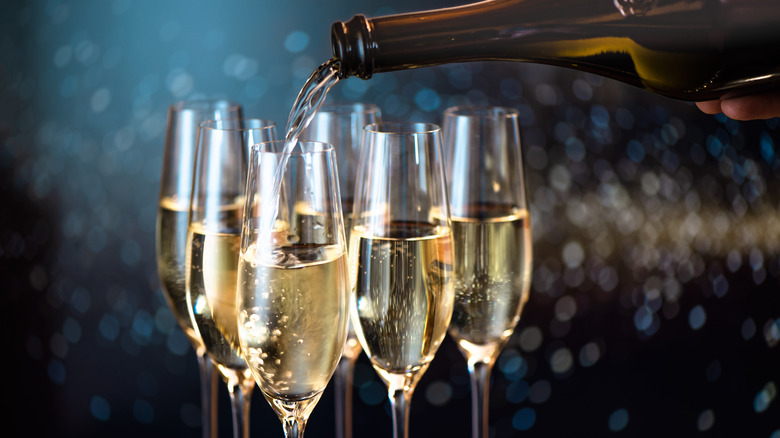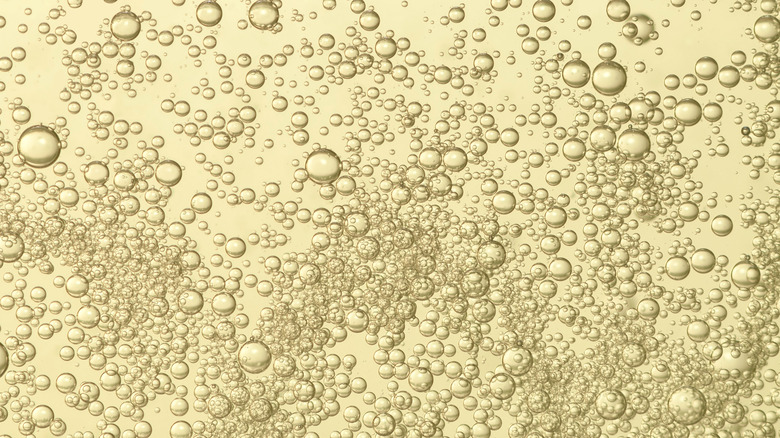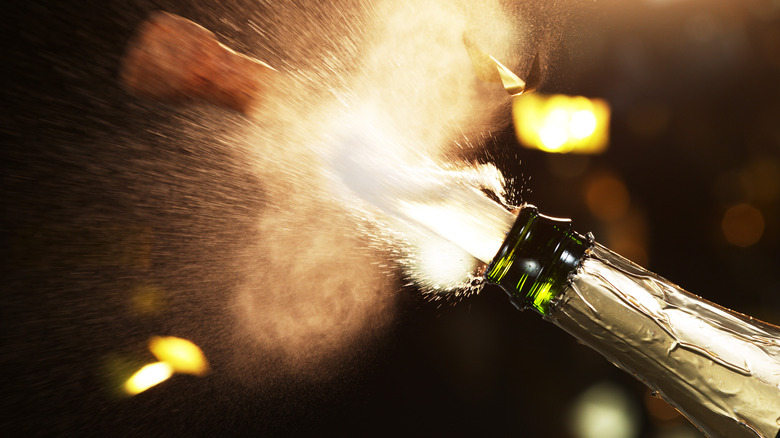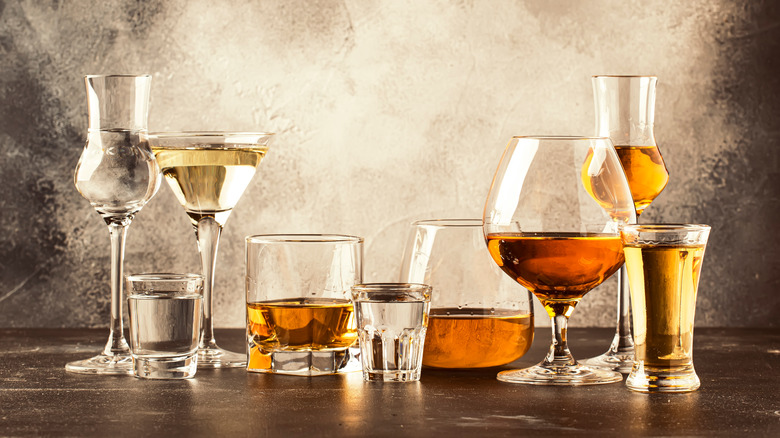The Real Reason Champagne Flutes Are So Divisive
According to Austria's Riedel crystal and glassware company, the champagne flute was originally crafted for clinking toasts at celebrations. Its narrow, cylindrical shape enhances the rapid upward spiral of bubbles in an exciting display of effervescence. Unfortunately, that same shape dampens the aromas of the wine, leaving the champagne lively in the glass and on the palate but flat when it comes to flavor.
Their designs are scientifically-based and proven to enhance aromas and flavors for all styles of wine. So, when they say flutes are passé, wine professionals listen. And, so should you. "We've known for over forty years that a glass' shape has an impact on your perception of aroma and [flavor], so why do we continue to think differently for champagne?" Riedel explains, adding that "70% of our flavor perception comes from aroma."
And part of that perception involves retronasal olfaction, which JAMA Network describes as a process in which aroma molecules reach the back of the nasal passage after traveling from the back of the mouth to the olfactory bulb.
The science of bubbles
BBC Future reveals that science supports abandoning flutes. Dr. Gérard Liger-Belair leads the "Effervescence & Champagne" research team at the University of Reims Champagne-Ardenne. He has dedicated his life to the exploration of bubbles ranging from soap bubbles to ocean spray. Champagne bubbles were a natural progression.
Dr. Liger-Belair uses gas chromatography and other methods to analyze champagne bubbles, aroma, and flavor release. He proved that a glass of champagne holds a million or more CO2 bubbles when served at a proper temperature of 12 degrees Celsius or 54 degrees Fahrenheit. Each bubble releases aroma molecules and carbonic acid when it explodes on the surface of the wine, spraying its perfume up to 4 inches into the air (according to Science X). Champagne flutes are specifically designed to increase the number and swift ascension of bubbles but not the release of aromas. Saucer or coupe glasses further limit the formation and release of bubbles by a third.
Ten million bubbles in a bottle
Science X suggests that part of champagne's pleasure comes from observing the upward cascade of swirling bubbles that eventually burst on the surface, spraying a microscopic mist of champagne droplets into the air and, sometimes, onto your face before each sip. Each micro explosion releases aromatic molecules from the wine that tantalize your nose and lips and layer the texture of the wine with depth. They explain that the bubbles add to the distinct feeling of the wine on the palate and indicate that too many are unpleasant while too few are disappointing. Dr. Liger-Belair laments that "a bottle of bubbly without the bubbles — all 10 million of them — would be a sad thing indeed."
Champagne flutes have been all the rage for decades and were once considered the most elegant vessel for sparkling wine. Now, however, the champagne flute has too many faults to be taken seriously.
Coupes, saucers, and tulips: Which glass is the best?
While incredibly stylish, the wide and shallow coupe glass allows the bubbles to dissipate too quickly taking their precious aroma molecules with them, resulting in a wine lacking aroma and flavor; And the flute, with its narrow cylindrical form, highlights spiraling and exploding bubbles but it stifles the aroma molecules — so, neither of these glasses allow for the best expression of champagne or sparkling wines.
Dr. Liger-Belair indicates, via Science X, that the now-popular tulip-shaped glasses championed by sommeliers and champagne producers as the best glass for champagne also fails to deliver as promised. The tulip shape has a rounder bowl apt at delivering more bubbles to the surface, but the narrow opening discourages the aromas from wafting upward and out of the glass, the same as flutes.
The Riedel glassware company insists that different styles of champagne need different styles of glasses. A vintage Blanc de Blancs (Chardonnay) champagne exhibits its best qualities in a tulip-shaped glass while rosé wines are best in diamond-shaped options, according to Advanced Mixology. "Champagne is a wine and deserves to be treated as such. Whether enjoying a Blanc de Blancs or a Cuvée, our Champagne wine glass allows the range of aromas of Champagne to unfold in a way which is not possible with a narrow flute," Maximilian J. Riedel.



